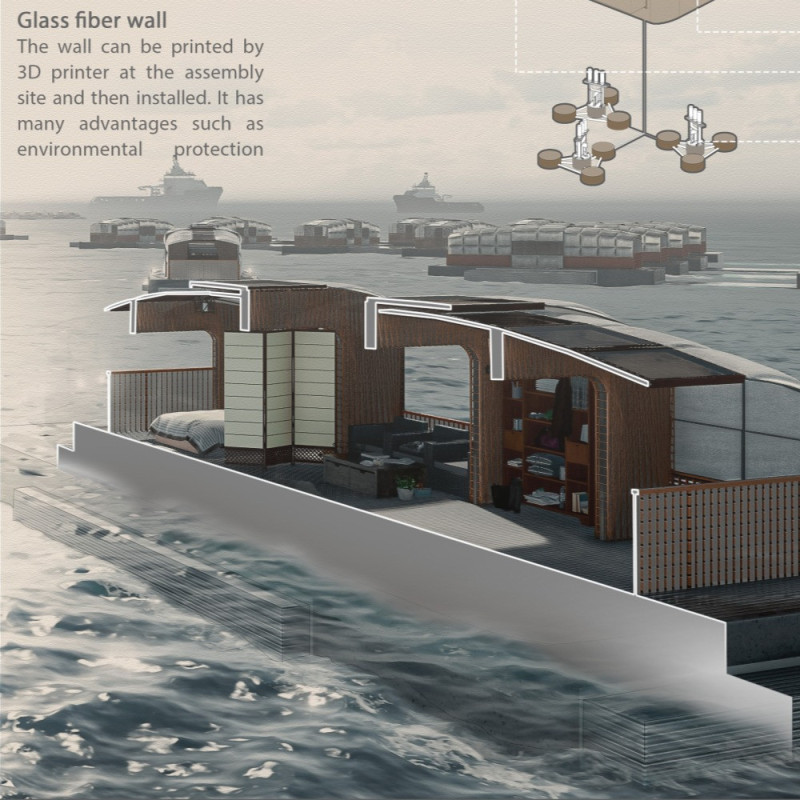5 key facts about this project
The Sampan Home project aims to improve the living conditions of the Tankas, who are an ethnic group living on junks in the coastal areas of Southern China. The focus is on modernizing their homes while preserving their cultural identity. The main idea behind the design is the concept of "floating" structures, inspired by the imagery of a "floating egg." This approach seeks to create harmony with the surrounding water and enhance the community's way of life.
Concept and Layout
The design includes a series of connected Sampan homes that encourage community interaction while ensuring that individual privacy is respected. The layout features distinct areas, such as balconies, bedrooms, living rooms, and entrance spaces. These spaces are organized to make the best use of limited area while promoting both social gatherings and personal retreat, essential for adapting to life on water.
Materials and Structure
A key construction material used in the homes is ETFE (Ethylene Tetrafluoroethylene) film. This film is lightweight and stable, contributing to buoyancy and effective thermal performance. Glass fiber is selected for walls and partitions, allowing for efficient assembly through 3D printing techniques. Additionally, a steel framework provides the necessary support, ensuring the homes are robust and reliable in aquatic conditions.
Sustainability Features
The Sampan Home also emphasizes sustainability by incorporating solar panels and generators to supply energy needs. This focus on self-sufficiency aligns with environmental concerns and highlights a commitment to renewable energy. A patented floating plate design helps optimize stability and buoyancy, enabling the homes to withstand water movement and weather changes.
Design Detail
Each home includes thoughtful features aimed at enhancing comfort, such as ventilation systems that respond to local climate. This integration of practical elements and cultural heritage creates a living space that is functional and respectful of the Tanka way of life. The design shows a solid understanding of both environmental needs and the community's traditions.



















































